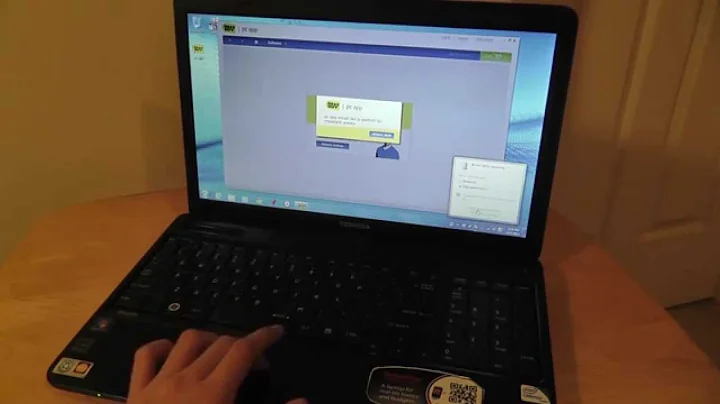Evolution of Computer Power Consumption: A Comparative Analysis
Table of Contents
- Introduction
- Power Consumption of Computers over Time
- testing Methodology
- Power Consumption of the Pentium 4 (2000)
- Power Consumption of the i5 (2012)
- Power Consumption of the i9 10900K (2020)
- Comparison of Power Consumption
- Environmental Considerations
- Future Trends in Power Consumption
- Conclusion
Power Consumption of Computers: A Look Into the Past and Present
From the early days of computer technology to the advanced systems we have today, power consumption has always been a significant concern. As technology progresses, computers become more powerful, but they also require more energy. In this article, we will examine the power consumption of computers over time, comparing the pentium 4 from 2000, the i5 from 2012, and the recently released i9 10900K. We will delve into the power consumption measurements of each system, discuss their environmental implications, and explore the future trends in power consumption.
1. Introduction
In this modern era of technology, computers have become an integral part of our daily lives. From carrying out simple tasks to handling complex operations, computers have undergone tremendous advancements over the years. With these advancements comes an increase in power consumption, which, in turn, raises environmental concerns. In this article, we will explore how power consumption has evolved in computers over time and analyze the implications of these changes.
2. Power Consumption of Computers over Time
Computers from different time periods have varying power requirements. The older models were comparatively less energy-efficient, consuming more power from the wall. On the other HAND, modern systems are designed to be more energy-efficient, utilizing advanced technologies to minimize power consumption. In order to understand the power consumption trends, we will examine three computer models from different time periods: the pentium 4 from 2000, the i5 from 2012, and the i9 10900K from 2020.
3. Testing Methodology
To obtain accurate measurements of power consumption, a specialized power socket was used during the testing process. This socket allowed for real-time monitoring of the power drawn by the computers from the wall. Two tests were conducted for each computer: idle power consumption and maximum load power consumption.
4. Power Consumption of the Pentium 4 (2000)
The pentium 4, a computer model launched in 2000, served as a benchmark for power consumption in its time. During the idle test, the pentium 4 drew approximately 63 watts from the wall. However, when subjected to the maximum load test using prime 95, the power consumption spiked to almost 100 watts. For a computer of its time, this level of power consumption was considered significant.
5. Power Consumption of the i5 (2012)
Comparatively, the i5 computer model from 2012 showcased improvements in power efficiency. During idle, the i5 consumed only 37 watts, demonstrating impressive energy-saving capabilities. Under maximum load conditions utilizing ida 64, the power consumption reached 95 watts. It is worth noting that this model included an AMD GPU, contributing to slightly higher power consumption.
6. Power Consumption of the i9 10900K (2020)
The i9 10900K, released in 2020, represents the pinnacle of modern computing power. Despite its remarkable performance capabilities, the i9 exhibited unexpected power-saving features. During idle, the power drawn from the wall measured at a mere 33 watts, showcasing significant advancements in energy efficiency. Under maximum load conditions, the power consumption rose to around 500 watts, highlighting the high-performance nature of the i9.
7. Comparison of Power Consumption
When comparing the power consumption of the three computers, a clear trend emerges. The power consumption of computers has significantly decreased over time, with the i9 demonstrating the highest level of energy efficiency. This evolution reflects the industry's commitment to reducing environmental impact and promoting sustainability through technological advancements.
8. Environmental Considerations
The reduced power consumption of modern computers is a positive development from an environmental perspective. However, there are still considerations to be made regarding the overall environmental impact of computer usage. While newer models show improved efficiency, the increasing demand for computing power and the disposal of outdated devices contribute to electronic waste and energy consumption. It is important to strike a balance between technological advancements and sustainable practices.
Pros:
- Reduced power consumption over time
- Energy-efficient designs in modern computers
- Environmental consciousness in the industry
Cons:
- Increasing demand for computing power
- Electronic waste from outdated devices
- Energy consumption during manufacturing and disposal processes
9. Future Trends in Power Consumption
As technology continues to advance at an exponential rate, the power consumption of computers is expected to continue decreasing. Future developments may include more efficient components, advanced power management systems, and innovative cooling solutions. These advancements will help further reduce energy consumption and promote a greener computing environment.
10. Conclusion
In conclusion, the power consumption of computers has significantly improved over time. From the pentium 4 in 2000 to the i9 10900K in 2020, there has been a remarkable evolution in energy efficiency. The industry's commitment to reducing power consumption and environmental impact is evident in the advancements made in modern computer systems. As we move forward, it is crucial to prioritize sustainable practices in the design, usage, and disposal of computers to ensure a greener future.
Highlights:
- Power consumption of computers has significantly improved over the years
- The pentium 4 drew approximately 63 watts during idle and nearly 100 watts under maximum load
- The i5 consumed only 37 watts during idle and reached 95 watts under maximum load
- The i9 10900K exhibited impressive energy efficiency, drawing a mere 33 watts during idle and around 500 watts under maximum load
- Future trends indicate a continued decrease in power consumption through advancements in technology and sustainable practices
FAQ:
Q: How has power consumption in computers changed over time?
A: Power consumption in computers has significantly decreased over time, with newer models exhibiting higher energy efficiency.
Q: What is the power consumption of the pentium 4 from 2000?
A: The pentium 4 drew approximately 63 watts during idle and nearly 100 watts under maximum load.
Q: How does the i5 from 2012 compare in terms of power consumption?
A: The i5 consumed only 37 watts during idle and reached 95 watts under maximum load.
Q: What are the power consumption figures for the i9 10900K from 2020?
A: The i9 10900K drew a mere 33 watts during idle and approximately 500 watts under maximum load.
Q: What are the environmental considerations in computer power consumption?
A: While power consumption has decreased, the increasing demand for computing power and electronic waste from outdated devices pose environmental challenges.


 < 5K
< 5K
 10
10


 157.4K
157.4K
 19.93%
19.93%
 28
28


 < 5K
< 5K
 2
2


 5.9K
5.9K
 100%
100%
 4
4


 < 5K
< 5K
 42.93%
42.93%
 0
0
 WHY YOU SHOULD CHOOSE TOOLIFY
WHY YOU SHOULD CHOOSE TOOLIFY



































